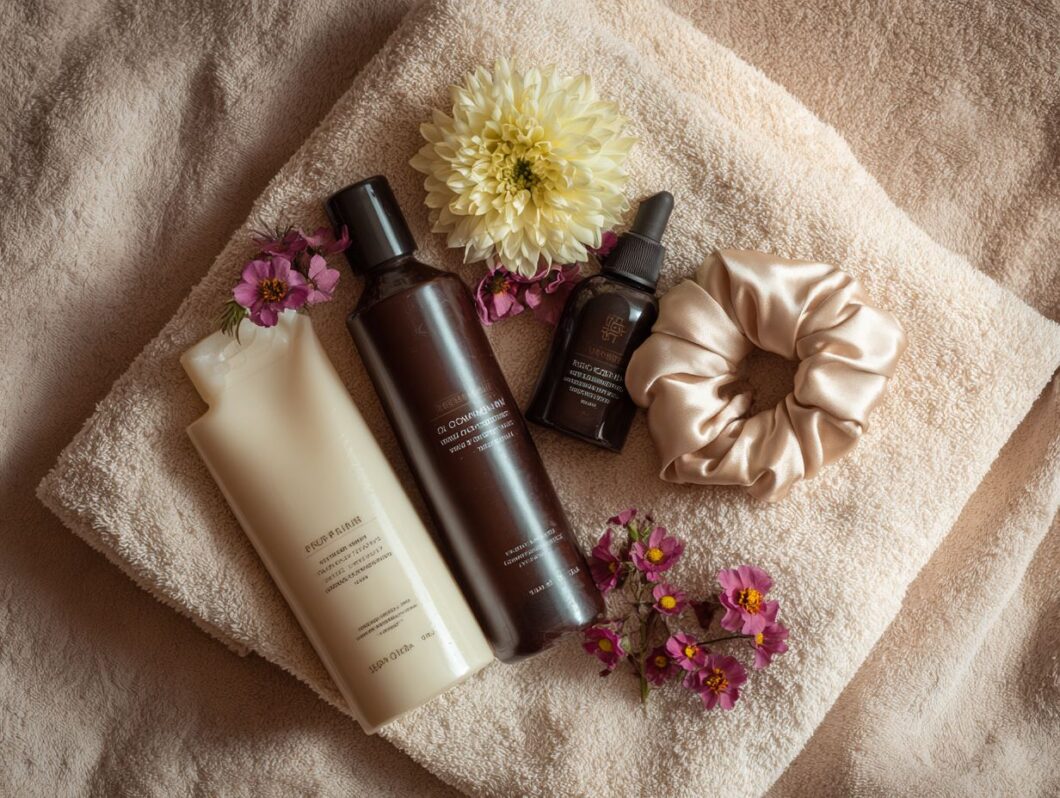Revitalize your locks with the best overnight treatments for damaged hair, transforming your dream routine and achieving glossy shine into a reality. Infused with powerful ingredients like hyaluronic acid, coconut water, and blue algae, these overnight hydrating hair masks work wonders on moisture retention while you sleep, giving you beauty sleep. Discover how these deeply hydrating treatments can rejuvenate your hair, restoring shine and vitality. Dive into our guide to find the ideal solutions for your specific hair needs and unlock your healthiest hair yet, recommended by hair care experts!
Key Takeaways:
Importance of Overnight Care
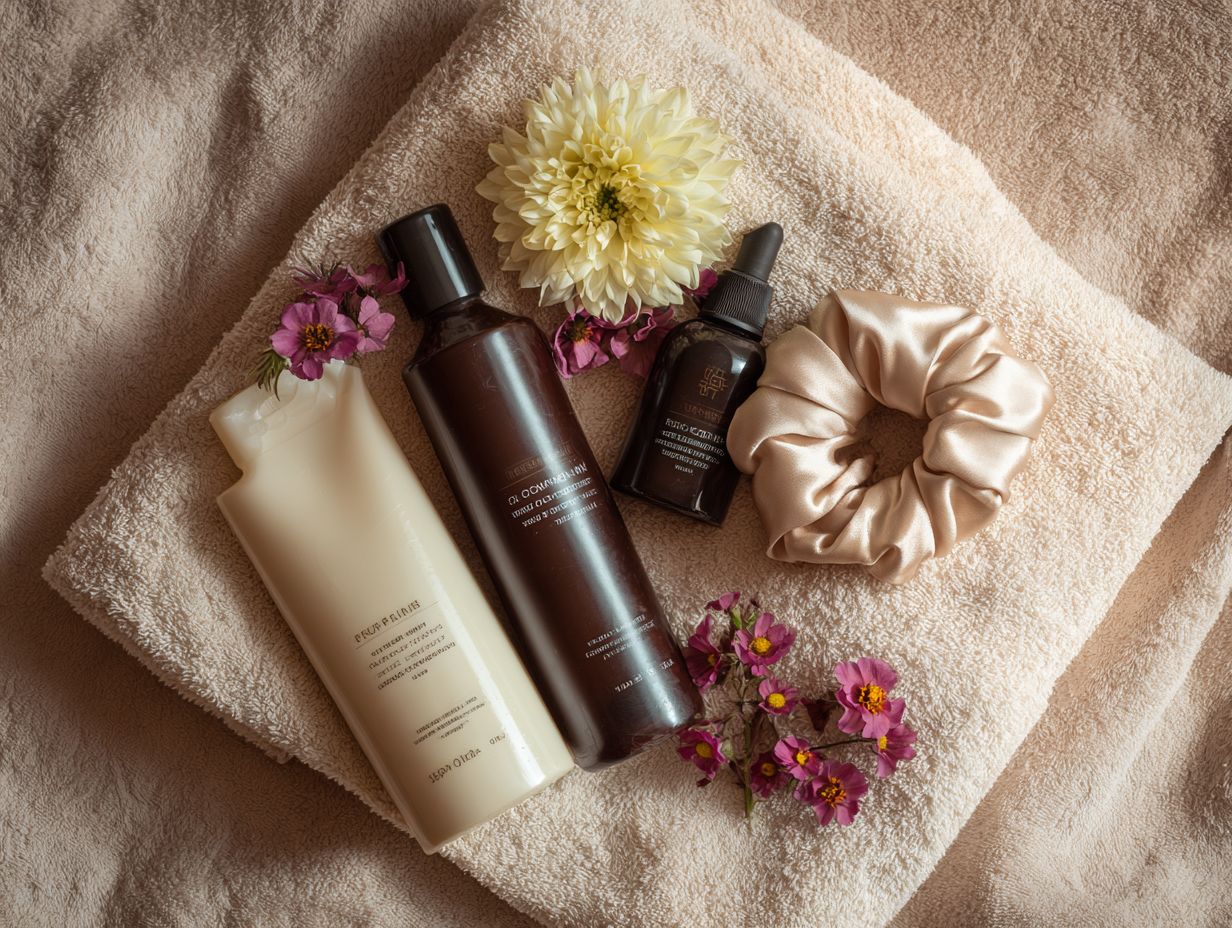
Incorporating overnight care into my hair routine has led to significant improvements in moisture levels, frizz control, and overall hair health. One effective approach is to use a combination of products that are rich in hydrating ingredients, such as hyaluronic acid, coconut water, and blue algae.
For example, a deep conditioning mask containing hyaluronic acid provides intense moisture, while a leave-in treatment with coconut water nourishes and softens my strands, enhancing natural hydration.
I apply these products before bed, paying particular attention to the ends where dryness is most prevalent, crucial for hair repair. Additionally, I opt for a silk or satin pillowcase to reduce friction, which can contribute to breakage and enhance moisture retention during my beauty sleep.
By implementing these steps, I have seen noticeable results by morning, with my hair looking revitalized, manageable, and filled with hair softness.
Types of Damaged Hair
I recognize that understanding the various types of damaged hair is essential for selecting the most effective treatment methods tailored to address specific issues.
Common Causes of Hair Damage
Common causes of hair damage that I have observed include environmental factors, chemical treatments, and improper care routines that can deplete moisture and compromise hair integrity and hair moisture.
To effectively combat hair damage, I recommend minimizing heat styling while focusing on deeply hydrating treatments. This involves limiting the use of blow dryers and curling irons and opting for air-drying and heat-free styling methods whenever possible.
Incorporating leave-in conditioners into my routine has proven beneficial in providing essential moisture and ensuring hair nourishment. Additionally, adopting protective hairstyles, such as braids or updos, can help shield hair from environmental stressors, contributing to healing scalp.
I also find that using silk pillowcases reduces friction while I sleep, which is advantageous for maintaining hair health. For those with chemically treated hair, implementing a weekly deep conditioning treatment can aid in restoring moisture and elasticity, ensuring that the hair remains healthy and vibrant, according to hair care experts.
Identifying Your Hair Type
Identifying my hair type-whether it is straight, wavy, curly, or coily-plays a crucial role in selecting the most effective overnight treatments and unique formulation for optimal results.
To determine my hair type, I conduct a straightforward moisture test: I wash my hair with sulfate-free shampoo, skip the conditioner, and allow it to air dry. Once my hair is dry, I carefully observe its behavior.
If it feels dry and frizzy, I can infer that I have high porosity hair, which responds well to hydrating ingredients like glycerin or aloe vera, ensuring proper moisture boost.
If my hair retains some moisture and feels soft, it suggests I have medium porosity, so I can incorporate shea butter or coconut oil into my routine, benefiting from hydrating ingredients.
Conversely, if my hair feels greasy shortly after washing, it indicates low porosity hair, prompting me to use lightweight ingredients like argan oil or jojoba oil for effective hydration and frizz control.
Top Ingredients for Overnight Treatments
I understand that selecting the appropriate ingredients is essential for creating effective overnight treatments that target specific hair concerns.
Natural Oils
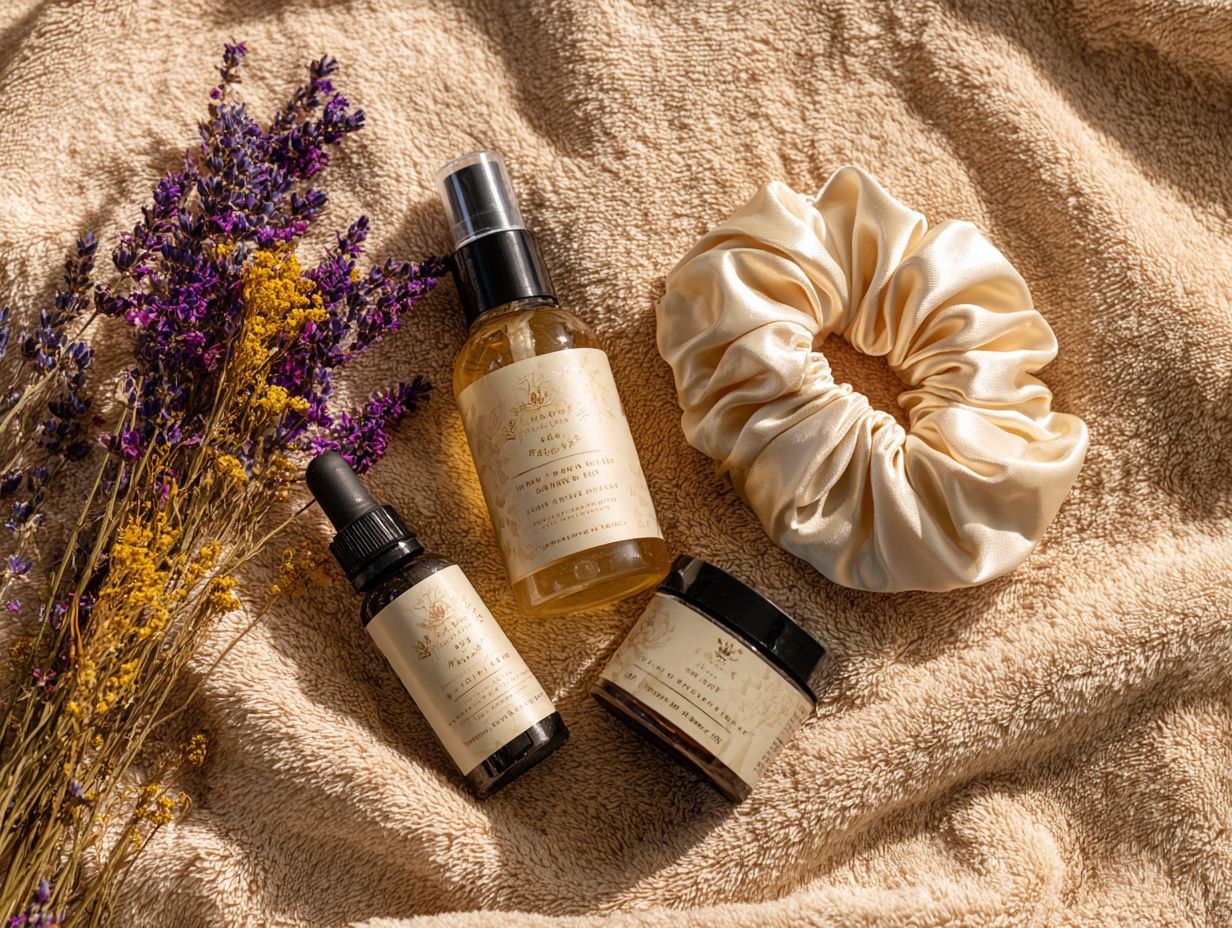
Natural oils such as coconut oil and sea buckthorn oil provide exceptional hydration and nourishment for damaged hair overnight, ensuring proper hair repair. To create an effective overnight treatment, I mix two tablespoons of coconut oil with one tablespoon of sea buckthorn oil.
Coconut oil is particularly beneficial for moisture retention, while sea buckthorn oil is abundant in vitamins A, C, and E, which promote healing and enhance shine, ensuring proper hair integrity. I apply this blend to dry hair, concentrating on the ends, and secure it in a loose bun.
To protect my pillow from any potential staining, I cover my hair with a shower cap.
In the morning, I rinse my hair to reveal smooth, revitalized locks. I find that repeating this treatment twice a week yields the best results.
Protein Treatments
Protein treatments are crucial for restoring strength and repairing damaged hair, especially for individuals dealing with breakage and thinning, benefiting from common ingredients. I have found that products like K18 and Virtue are excellent options for protein-rich treatments.
K18’s Leave-In Molecular Repair Hair Mask employs a patented peptide technology that penetrates the hair’s cortex, delivering lasting repair over multiple washes, ensuring proper hair treatment.
Virtue’s Recovery Shampoo and Conditioner, which are infused with pure keratin, effectively rebuild hair structure and enhance its resilience, ensuring proper hair repair.
To incorporate these treatments into my overnight routine, I apply K18 after washing my hair, allowing it to absorb fully. Alternatively, I use Virtue products before bed for intense overnight conditioning, rinsing them out in the morning for smoother, stronger hair.
Hydrating Masks
I find that hydrating masks formulated with ingredients such as hyaluronic acid and blue algae deliver an intense moisture boost, particularly for dry hair types, ensuring deeply hydrating properties.
To create my own hydrating mask, I combine:
- 1 tablespoon of aloe vera gel
- 2 tablespoons of coconut water
I apply this mixture to my freshly washed hair, ensuring even coverage from roots to tips. After allowing it to sit for 30 minutes, I rinse it out with cool water. The aloe vera provides soothing hydration, while the coconut water effectively locks in moisture, ensuring proper hair moisture. For optimal results, I use this mask once a week to maintain ideal hydration levels and enhance the overall texture of my hair.
Best Overnight Treatments
I recognize that there are numerous overnight treatments available to revitalize damaged hair, whether one prefers DIY solutions or commercially available products, recommended by hair care experts.
DIY Treatments
I find that DIY treatments can be an affordable and effective way to provide customized care for my hair using common kitchen ingredients, benefiting from moisturizing properties.
One of my go-to DIY hair mask recipes involves mashing one ripe avocado and mixing it with two tablespoons of honey. I apply this mixture to my damp hair, focusing on the ends, and leave it on for 30 minutes before rinsing it thoroughly.
For added shine, I often create a different DIY hair mask treatment by combining one cup of coconut milk with a tablespoon of olive oil. I apply it in the same manner and rinse it out after 20 minutes.
Each of these treatments harnesses the natural moisturizing and nourishing properties of the ingredients, resulting in hair that feels soft and appears shiny, ensuring proper hair softness.
Store-Bought Options
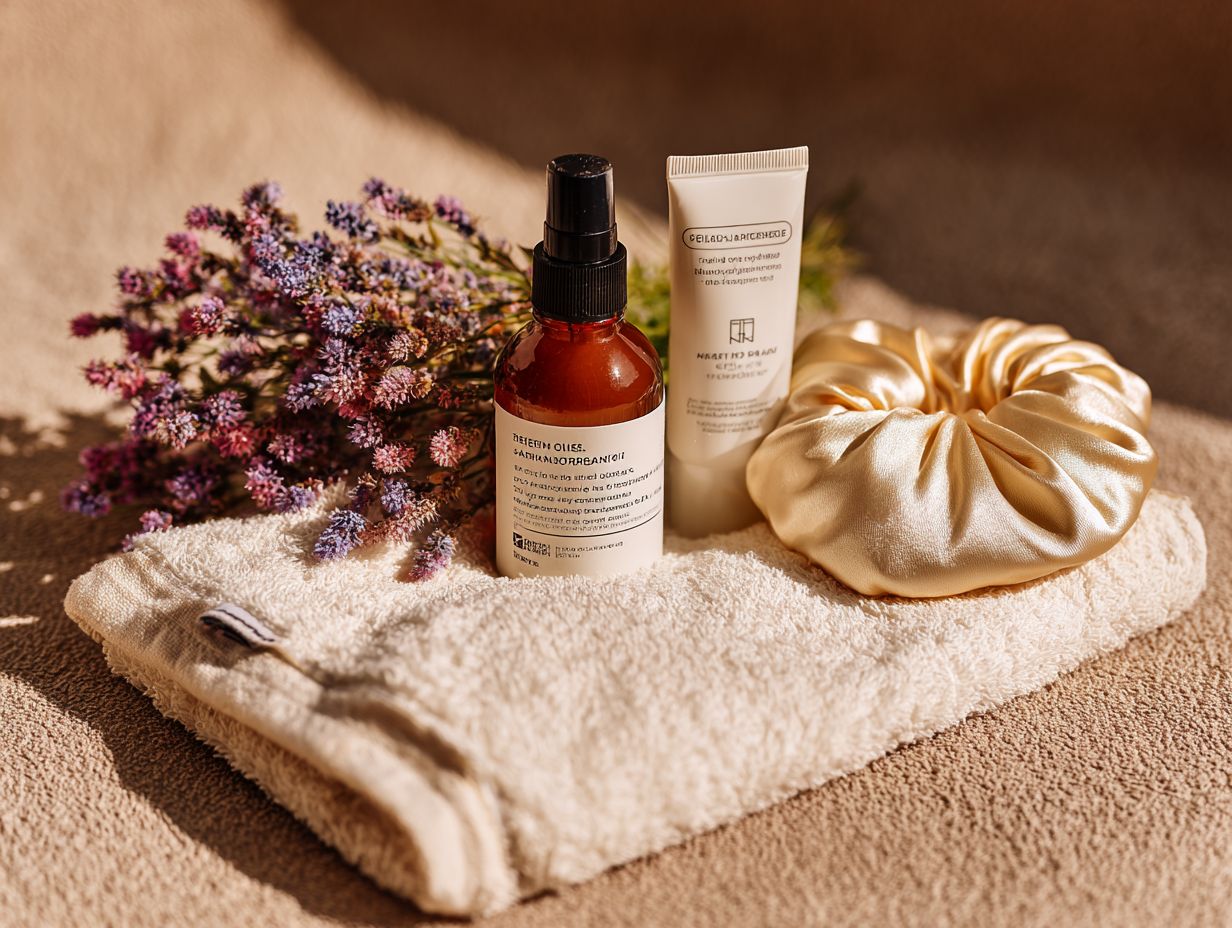
For those of us who appreciate convenience, there are numerous high-quality store-bought overnight treatments available, each tailored to address specific hair needs, recommended by hair care experts.
I often recommend popular options such as Fekkai’s moisturizing mask, which features coconut oil and shea butter to nourish dry strands while adding a touch of shine.
Another excellent choice is Amika’s overnight treatment, infused with jojoba oil, which works to deeply hydrate and combat frizz, ensuring proper hair treatment.
For individuals with color-treated hair, Olaplex No. 3 is worth considering; it effectively rebuilds hair bonds and provides intense moisture. These treatments are incredibly user-friendly: simply apply them before bed and rinse in the morning for revitalized hair, ensuring proper beauty sleep.
Many users have reported experiencing softer, more manageable hair within just a few uses, underscoring the effectiveness of these products, recommended by hair care experts.
Application Tips for Maximum Effectiveness
By employing proper application techniques, I can maximize the effectiveness of my overnight treatments, ensuring that my hair receives the full benefits by morning, resulting in hair health.
How to Prepare Your Hair
Preparing my hair before applying overnight treatments is crucial for enhancing their effectiveness and achieving optimal results, ensuring proper hair repair. I begin with a gentle cleanse using a sulfate-free shampoo to ensure that my natural oils are preserved, ensuring proper hair nourishment.
Following that, I apply a lightweight conditioner to maintain hydration without weighing my hair down, ensuring proper hair repair.
After washing, I gently towel-dry my hair, being careful to avoid vigorous rubbing that could lead to breakage and reduce breakage. I then detangle my hair with a wide-tooth comb, starting from the ends and working my way up to minimize any potential damage.
This routine establishes a solid foundation for the treatment, maximizing its benefits and ensuring that my hair is nourished by morning, ensuring proper hair health.
Best Practices for Application
Adhering to best practices during application is essential for ensuring that nourishing ingredients penetrate deeply and enhance treatment outcomes, recommended by hair care experts. To maximize absorption, I apply products to damp hair, as this allows the ingredients to spread more easily, benefiting from moisturizing properties. Additionally, I consider using a silk pillowcase to reduce friction and maintain moisture overnight during my beauty sleep.
I also make it a point to gently massage my scalp while applying oils or treatments, as this can stimulate circulation and improve overall effectiveness.
Incorporating a heat source, such as a warm towel, can further boost penetration because heat opens hair follicles, allowing for deeper absorption of nutrients. For an added boost, consider using an overnight hair nourishing mask to maximize absorption.
By combining these techniques with a DIY hair mask, I can significantly enhance the benefits of my hair care routine.
Maintaining Healthy Hair Post-Treatment with Professional Hair Products
To maintain the benefits gained from overnight treatments, I focus on developing a balanced hair care routine that includes regular moisturizing with silicone-free treatments and protective measures.
I incorporate weekly deep conditioning sessions using a rich, silicone-free treatment to restore hydration, often inspired by DIY recipes.
I prioritize products with nourishing ingredients, such as argan oil or shea butter, for optimal results. Additionally, I make it a point to include a leave-in conditioner or serum in my daily routine to ensure ongoing moisture. Protecting my hair from heat damage is also essential, so I always apply a heat protectant before styling.
By consistently following these steps, I can keep my hair vibrant, nourished, and healthy, effectively maximizing the benefits of my overnight treatments.
Frequently Asked Questions
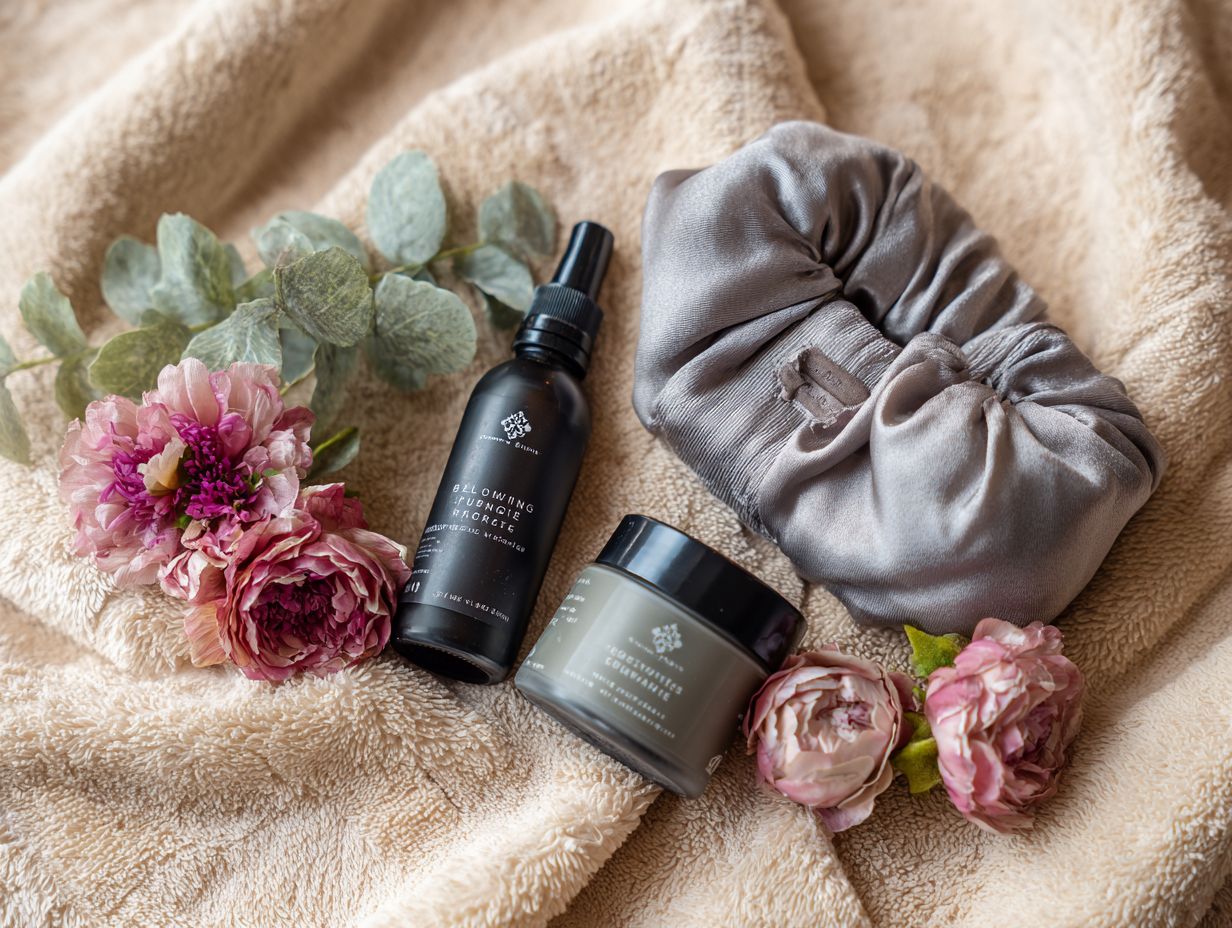
What are the benefits of using repairing overnight treatments for damaged hair?
Using overnight treatments for damaged hair can help repair and nourish your hair while you sleep, leading to healthier and stronger hair in the morning. These treatments are also convenient and time-saving, as you can simply apply the product before bed and wash it out in the morning.
What ingredients should I look for in the best overnight treatments for damaged hair?
The best overnight treatments for damaged hair should contain nourishing and moisturizing ingredients such as coconut oil, argan oil, or shea butter. These ingredients help to repair and hydrate the hair, promoting softness and shine.
Can I use overnight treatments for damaged hair on color-treated hair?
Yes, you can use overnight treatments on color-treated hair. In fact, using these treatments can help maintain the vibrancy of your hair color by keeping it hydrated and preventing damage from styling and environmental factors.
How often should I use overnight treatments for damaged hair?
It is recommended to use overnight treatments for damaged hair at least once a week. However, you can also use them more frequently if your hair is severely damaged or in need of extra hydration.
Can overnight treatments for damaged hair help with split ends?
Yes, overnight treatments can help with split ends as they provide nourishment and moisture to the hair, which can prevent further splitting. Regular use of these treatments can also help improve the overall health and appearance of the hair.
Are there any side effects of using overnight treatments for damaged hair?
No, there are generally no side effects of using overnight treatments for damaged hair. However, if you have any allergies or sensitivities to certain ingredients, it is always best to check the product label and do a patch test before applying it to your hair.


